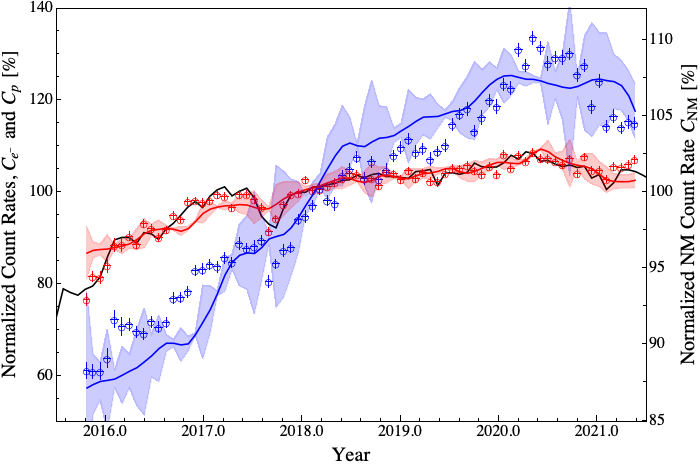► Japanese
CALET data of the cosmic-ray proton and electron count rates is open to public: charge-sign dependence of the solar modulation is observed

CALET, launched to the International Space Station in August 2015, is a calorimeter to measure cosmic rays and has been accumulating scientific data for over seven years. CALET measured the variations in the count rates of protons and electrons accompanying with the solar activity, which is known as "solar modulation of the cosmic ray". The tables of the normalized count rates of protons and electrons at the average rigidity of 3.8 GV for each Carrington rotation from October 2015 to May 2021 are open to the public via DARTS in June 2023.
This proton and electron data shows that the variation in the count rates of electrons is significantly higher than that of protons, revealing the charge-sign dependence of the solar modulation. The observed charge-sign dependence is also reproduced by a numerical "drift model" of the solar modulation, suggesting the drift effect plays an important role on the solar modulation. This result was published from Physical Review Letters on May 25, 2023.
Links:
- Charge-sign dependent cosmic-ray modulation observed with the Calorimetric Electron Telescope on the International Space Station
https://journals.aps.org/prl/abstract/10.1103/PhysRevLett.130.211001
DOI: https://doi.org/10.1103/PhysRevLett.130.211001 - CALET
https://humans-in-space.jaxa.jp/en/biz-lab/experiment/theme/detail/000932.html - DARTS/CALET
https://darts.isas.jaxa.jp/astro/calet/
(June 2023)





